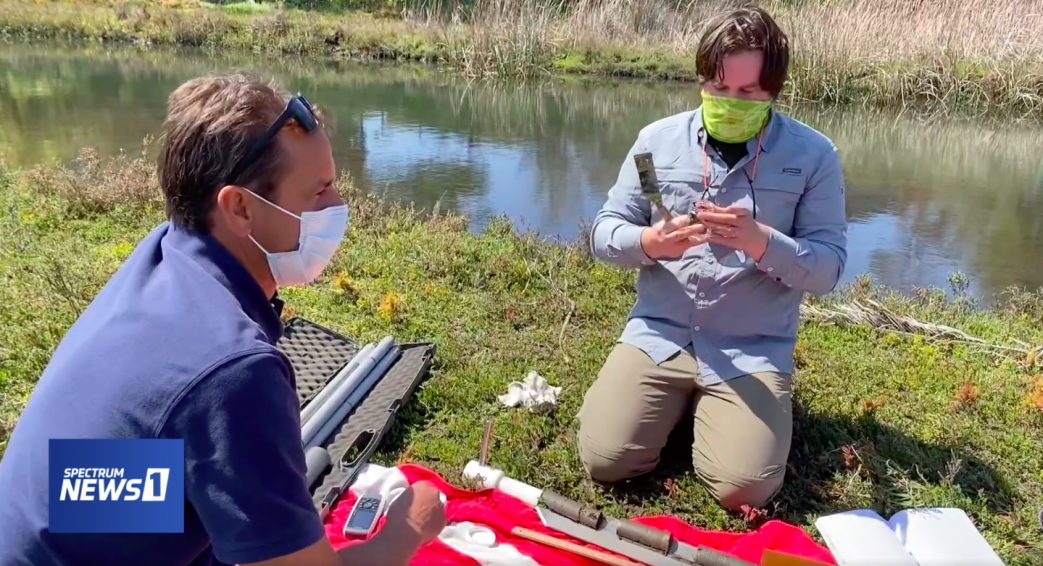Spectrum News 1 joined Matthew Costa in the field at Famosa Slough in San Diego, one of many local sites Matthew has visited this spring as part of his field work. The Slough is part of the remaining 10% of wetlands in California and is an important habitat and source of carbon storage.
Matthew’s work aims to understand how much carbon these local wetlands store in the ground. Plants capture CO2 from the air, utilize the carbon, and release oxygen back into the atmosphere. By taking sediment cores at various locations in the Slough and other sites, Matthew can determine how much carbon has been stored in the mud over time.
This work, done in partnership with local nonprofit Wildocast, is important for informing policy and conservation measures to protect these fast disappearing habitats. Without protection, the wetlands may be developed, causing the stored carbon to be released back into the atmosphere.
You can read the full story and watch the video here.
Matthew’s work has also been featured in other news outlets here.


